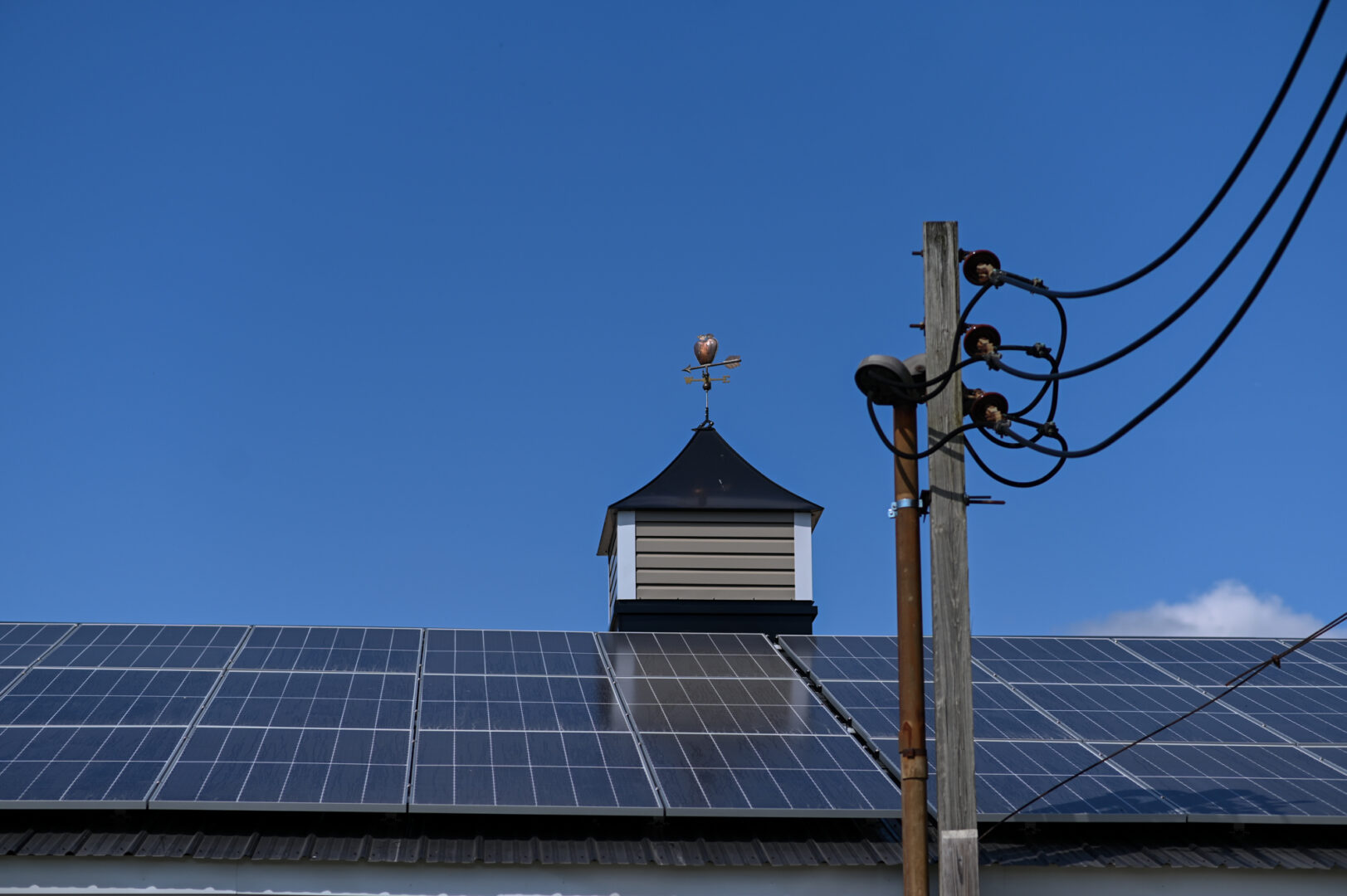
A solar panel array at Maple Lawn Farms in York County on Sept. 20, 2022.
Jeremy Long / WITF


A solar panel array at Maple Lawn Farms in York County on Sept. 20, 2022.
Jeremy Long / WITF

Jeremy Long / WITF
A solar panel array at Maple Lawn Farms in York County on Sept. 20, 2022.
Pennsylvania now has 1 gigawatt of solar energy capacity–enough to power all the homes in a city as big as Pittsburgh.
The Shapiro Administration says it’s an important milestone that helps cement the state’s position as an energy leader.
But solar industry backers say the state should be doing more to help the industry grow.
Solar energy projects started to take off after the legislature set renewable energy goals nearly two decades ago. The Alternative Energy Portfolio Standards Act set a goal of electric providers buying 8% renewables, including 0.5% in-state solar, by 2021.
The Pennsylvania Public Utility Commission said the number of new solar projects grew by 160% in the past five years. Small, rooftop solar makes up about two-thirds of the total.
The PUC and Department of Environmental Protection expect a second GW will come online faster than the first. They said solar now under construction will be enough to supply the combined households of Altoona, Harrisburg, Scranton, and West Chester.
Sharon Pillar, executive director of the Pennsylvania Solar Center, said 1 GW is unremarkable when compared to neighboring states.
Solar Energy Industries Association data shows New York has nearly five GWs of solar while New Jersey has 4.6 GWs and Maryland has 1.8.
“I think the administration – rather than celebrating this goal – they should be focusing on updating our AEPS so that’s in alignment with other state goals,” Pillar said.
Without an update, Pillar said the state could lose out on jobs in solar installation and manufacturing, because it won’t be able to compete with other states.
Developers across the country will be able to take advantage of incentives from the federal Inflation Reduction Act, so Pillar says they will favor states that have extra incentives. Financing for projects has become difficult lately because of higher interest rates.
Pennsylvania’s solar generation is dwarfed by other sources. The state has a total capacity of around 48 GWs, with most of that coming from natural gas.
Joe Morinville, president of EIS Solar, said hitting 1 GW shows that what used to be a fringe industry is now mainstream.
“I feel it’s a very optimistic milestone,” he said. “Could we have gotten there sooner? Oh yeah, way sooner. And could we be going faster? Absolutely.”
Morinville is also calling for a change in the AEPS and legalization of community solar–projects that are sited close to neighborhoods where people can subscribe directly to the power generated.
Morinville and Pillar both say more solar could help stabilize energy prices. The last two years saw major swings in the price of natural gas.
Morinville said solar helps offset peak demand in the summer months, when lots of sunshine provides power at the same time it causes demand for air conditioning.
StateImpact Pennsylvania is a collaboration among WITF, WHYY, and the Allegheny Front. Reporters Reid Frazier, Rachel McDevitt and Susan Phillips cover the commonwealth’s energy economy. Read their reports on this site, and hear them on public radio stations across Pennsylvania.
(listed by story count)
StateImpact Pennsylvania is a collaboration among WITF, WHYY, and the Allegheny Front. Reporters Reid Frazier, Rachel McDevitt and Susan Phillips cover the commonwealth’s energy economy. Read their reports on this site, and hear them on public radio stations across Pennsylvania.
Climate Solutions, a collaboration of news organizations, educational institutions and a theater company, uses engagement, education and storytelling to help central Pennsylvanians toward climate change literacy, resilience and adaptation. Our work will amplify how people are finding solutions to the challenges presented by a warming world.